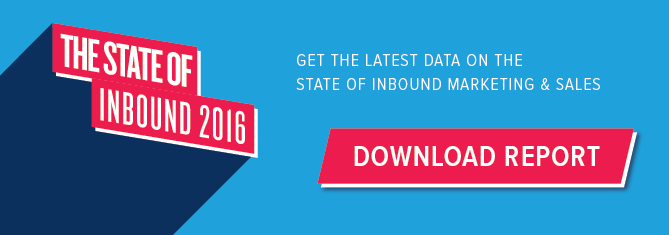As a temporary expat working overseas in Germany back in 2012-2013, WhatsApp was my social lifeline. Provided that I was using a reliable Wi-Fi connection, WhatsApp essentially served as a FREE way of text messaging with family and friends both locally and at home. You can imagine how quickly the application’s popularity grew in the global community since launching back in 2009… but what wasn’t so apparent at the time was its potential to be quite the valuable marketing tool.
A little background…
For those of you unfamiliar with WhatsApp, it’s a mobile messaging application that enables users to communicate via SMS-style messages (including photo and video content) directly within the app itself. WhatsApp leverages a mobile device’s data plan to operate, so there’s no cost affiliated with it outside of your monthly cell phone bill, making it particularly attractive to ROI-driven marketers on a budget (aka all marketers).
Having been purchased by Facebook a couple years ago—for approximately $19 billion no less—WhatsApp now boasts over 1 billion users from more than 180 countries. It’s now available for desktop, and features WhatsApp Calling (acting similarly to Skype – without the video chat functionality). Plus, it’s been secured with end-to-end encryption so that any sensitive information passed from user to user can’t be read by anyone else, including WhatsApp or Facebook personnel. But its privacy policy isn’t the only marketing-friendly draw.
B2B marketing with WhatsApp
According to HubSpot’s newly released 2016 State of Inbound Report, 29% of respondents selected messaging apps like WhatsApp or WeChat as their preferred business communications channel. [You can download the full report here!]
29 percent… That’s huge! So why aren’t the vast majority of B2B marketers actively building out a WhatsApp strategy right this second?
As more personalized marketing trends become the norm, WhatsApp undoubtedly lends itself to content promotion and lead nurturing. But the highly personal nature of sending a text message may be the very reason why it hasn’t quite taken off across the business-to-business SMB community (in addition to a few other limitations).
But WhatsApp is on the move – and a number of business-oriented communication features are in the works, as mentioned in this clip from the WhatsApp blog:
“People use our app every day to keep in touch with the friends and loved ones who matter to them, and this isn't changing. But as we announced earlier this year, we want to explore ways for you to communicate with businesses that matter to you too, while still giving you an experience without third-party banner ads and spam. Whether it's hearing from your bank about a potentially fraudulent transaction, or getting notified by an airline about a delayed flight, many of us get this information elsewhere, including in text messages and phone calls. We want to test these features in the next several months, but need to update our terms and privacy policy to do so.”
That being said, there are a number of moves you can make using WhatsApp that could really up your marketing game.
Enter WhatsApp Broadcasting…
WhatsApp introduced “Broadcasting” in late 2013. WhatsApp Broadcasting allows users to send messages to a group of people all at once, without revealing the other recipients to one another (similar to an email’s BCC function). Plus, if a recipient answers your message, the response remains between you and that recipient – no other users will fall victim to a seemingly endless string of group chat texts… *Phew*
To use Broadcasting, you need to use Broadcast Lists. You can create an unlimited number of these lists, but you can only include 256 contacts per list. So if you’ve got a large contact database you’re trying to reach via WhatsApp, you’ll consequently need a larger number of lists.
HOWEVER – and this however deserves all caps…
In order for you to communicate with your prospects on WhatsApp, you need their phone numbers stored in your mobile phone’s address book. The catch is that your prospects must also have your phone number stored in THEIR respective address books. So WhatsApp is a no-go if your WhatsApp number isn’t actively promoted and/or readily available on your website and other marketing materials.
Therefore, if you’re looking to expand into the WhatsApp world of marketing, building awareness of your WhatsApp account is priority numero uno.
The perks…
If you can manage to build up your number of WhatsApp friends, so to speak, there really are a number of ways you can creatively use the application to nurture them down your sales funnel.
Think about when you receive a text message. You typically read it as soon as you see it’s there, right? WhatsApp provides marketers the opportunity to easily reach customers in real time, so long as they delicately navigate text messaging etiquette and keep their WhatsApp strategy from evolving into an interruptive nuisance.
Along these lines, consider the types of alerts you’d like to have sent to you, or the types of engagement you can facilitate via real-time communication. Not all content is going to be appropriate for this channel, so it’s important you don’t overdo it. Here are some WhatsApp marketing ideas to get you started…
- Free giveaways or contests (ie: “[Your Company] WhatsApp Alert: The first 50 customers to respond with the word COUPON receive a 10% discount on their next order!”)
- Notifications about sales or other limited-time promotions
- Links to landing pages for newly available content (such as eBooks or webinar registrations)
- Breaking industry news
- Important company announcements and video messages from your CEO
- Invitations to events, conferences, speaking engagements, cocktail parties, etc.
- “Thank You” messages and post event follow-up
- Help chat / technical support
Or you can even simply use WhatsApp as a branding tool to showcase that sassy personality and company culture of yours, something that could make a B2B company in a relatively “dry” industry pop! For example, you could deliver a song of the day, a weekly joke, a TGIF Friday funny, etc., just as long as it’s distributed on a consistent basis.
Extra WhatsApp recommendations:
1. Recruit customers first. If you think about which of your contacts are the least likely to question receiving a text from you in such a direct manner, it’s probably your current customers. So start there! They’ll appreciate being “the first to hear the news” about a sale or event, so if you incorporate this into your “Find Us on WhatsApp!” pitch, you’re likely to speedily accrue some active participants.
2. Convenience is key. Make it as easy as possible for your prospects and customers to 1) download WhatsApp if they don’t already use it, and 2) add your company’s phone number to their address book.
3. Segment your Broadcast Lists. This may seem like a no-brainer, but it’s a good idea to create each list based on a contact’s lifecycle stage, industry, job role, etc. and then tailor the content you use for each group accordingly, just like any other marketing channel you might use. Just because you’re mass messaging, it doesn’t mean you should throw customized content for each buyer persona out the window.
4. Set expectations early. If prospects are committing to hearing from you on WhatsApp, they should know exactly what they’re signing up for. By informing them right up front about what types of content they will be receiving, you’re preventing your messages from being perceived as unwelcomed.
5. Be succinct. Keep those WhatsApp messages short! Even shorter than emails. Nobody really cares for a long-winded marketing message, so think along the lines of what you’d include in a tweet.
6. It’s a two-way street! Encourage interaction. Make it clear that you are open to receiving messages, in addition to sending them – and assign someone on your company’s marketing team to monitor your account on a daily basis to ensure messages from your prospects and customers aren’t slipping through the cracks.
So that’s what’s up with WhatsApp! If you’ve already tried it out, feel free to post in the comments about what you find works best, and what ideas don’t work at all. We’d love to hear from you.
And speaking of what works best, if you’re looking for all the latest and greatest inbound marketing insights, HubSpot JUST released their 2016 State of Inbound Marketing Report – and you can download it for free! Just follow the link to the landing page, fill out the form and the data is all yours. Enjoy!











